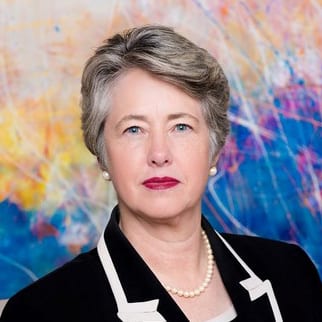
For the first time in history, we’re pleased to report that over 1,000 out LGBTQ people hold public office in the U.S.
LGBTQ elected officials are on the front lines of defending our rights and freedoms, which are under threat at every level of government. Despite the fact the LGBTQ community has never had equitable representation in government – and we still have a long way to go – there are clear signs of progress. LGBTQ elected officials represent the strength and diversity of not only who we are as a society now, but also the America we aspire to build for future generations.
– Mayor Annise Parker, President & CEO of LGBTQ Victory Institute
Key Findings
LGBTQ Victory Institute’s Out for America report is an annual snapshot of the number of known out LGBTQ elected officials in the United States and their demographics. The Out for America 2022 report — released in August 2022 — reviews LGBTQ elected representation as of June 2022.
known out LGBTQ elected officials in the U.S.
of U.S. elected officials are LGBTQ
of U.S. population is LGBTQ*
more LGBTQ people must be elected to achieve equitable representation**
Between 2021 and 2022:
- LGBTQ elected officials increased by 5.8 percent, with 1,043 currently serving;
- LGBTQ elected officials of color increased by 12.3 percent, compared to just 1.3 percent for white LGBTQ elected officials;
- LGBTQ Asian-Pacific Islander elected officials increased by 19.2 percent (from 26 to 31), among the highest among racial/ethnic groups;
- Non-cisgender elected officials have increased more than tenfold in last five years (from 6 in 2017 to 77 in 2022);
- Non-binary/genderqueer elected officials increased by one-third (from 9 to 12);
- Transgender elected officials grew by 9.8 percent (from 41 to 45);
- Bisexual elected officials increased by 26.8 percent (from 71 to 90) while the number of lesbian elected officials decreased by 2.2 percent (from 269 to 263); and
- 10 states have fewer LGBTQ elected officials than they did in 2021, while 22 states have more.
Currently:
- LGBTQ people are severely underrepresented among elected officials, needing to elect 35,854 more to achieve equitable representation;
- Alaska, Louisiana, Mississippi and South Dakota are the only states with zero known LGBTQ state legislators;
- 75.1 percent of LGBTQ elected officials are Democrats and just three percent are Republicans;
- LGBTQ elected officials are significantly more racially and ethnically diverse than the overall elected official population, but are less diverse than the U.S. population; and
- 24 states have transgender elected officials serving and 32 states have non-cisgender elected officials.
*According to Gallup.
** There are 519,682 U.S. elected positions, according to Becoming a Candidate, Jennifer L. Lawless.
Elected Positions
LGBTQ people are severely underrepresented at every level of government and in every public position in the United States.

governors
The U.S. must elect 2 more governors for equitable representation (a total of 4 out of 50 governors).

statewide executives*
The U.S. must elect 17 more statewide executives for equitable representation (a total of 23 out of 325 state- and territory-wide executives).

U.S. senators
The U.S. must elect 5 more U.S. senators for equitable representation (a total of 7 out of 100 U.S. senators).

U.S. House members
The U.S. must elect 22 more U.S. representatives for equitable representation (a total of 31 out of 435 U.S. representatives).

state legislators*
States, territories and the District of Columbia must elect 346 more out LGBTQ state legislators for equitable representation (a total of 538 out of 7,572 legislators).

mayors
The U.S. must elect 96 more out LGBTQ mayors of cities with 30,000+ population for equitable representation (from 19 to 115 of 1,621 mayors).

local officials
The U.S. must elect more than 15,000 more out LGBTQ local officials for equitable representation.

elected judicial officials
The U.S. must elect thousands more judicial officials for equitable representation.
* Statewide executives include two territory-wide elected officials in Guam and state legislators include one senator in the U.S. Virgin Islands and another in Puerto Rico.
Race & Ethnicity of LGBTQ Elected Officials
From June 2021 – June 2022, LGBTQ elected officials of color grew at significantly greater rates than white LGBTQ elected officials, yet white LGBTQ elected officials remain overrepresented among LGBTQ elected officials overall.
increase in LGBTQ elected officials of color
increase in white LGBTQ elected officials
increase in Asian & Pacific Islander LGBTQ elected officials
increase in Black LGBTQ elected officials
increase in Latinx LGBTQ elected officials
increase in Native American/Alaskan Native LGBTQ elected officials
Sex & Gender of LGBTQ Elected Officials
From June 2021 – June 2022, non-cisgender LGBTQ elected officials outgrew cisgender LGBQ elected officials (by 4.3 percent and 13.2 percent, respectively), yet cisgender LGBQ elected officials remain overrepresented among LGBTQ elected officials.
of LGBTQ elected officials are cisgender
of LGBTQ elected officials are not cisgender
increase in non-binary/genderqueer elected officials
increase in transgender elected officials
increase in GBQ cisgender men elected officials
increase in LGBQ cisgender women elected officials
Sexual Orientations of LGBTQ Elected Officials
From June 2021 – June 2022, bisexual elected officials grew at a faster rate than most other sexual orientations. Yet lesbians decreased in number, now making up 25.2 percent of all LGBTQ elected officials.
increase in bisexual elected officials
increase in pansexual elected officials
increase in queer elected officials
increase in gay men elected officials
decrease in lesbian elected officials
Party Affiliation
From June 2021 – June 2022, the percentage of LGBTQ elected officials who identify as Democrats jumped slightly, from 73.1 percent to 75.1 percent. Three percent of LGBTQ elected officials (31) identify as Republicans.
Party Affiliation of U.S. LGBTQ Elected Officials by Year

Out for America Map
Our Out for America map is the most comprehensive database on known openly LGBTQ elected officials in the United States. The map is updated weekly to show the current state of LGBTQ representation in elected government.

First published in November 2017, Out for America is LGBTQ+ Victory Institute’s annual analysis of the state of LGBTQ representation in America. While the increase in LGBTQ elected officials each year is primarily due to new LGBTQ people being elected, part of the increase can be attributed to people coming out while in office and Victory Institute’s efforts to identify more LGBTQ people already in elected office.
You can view previous Out for America reports below: